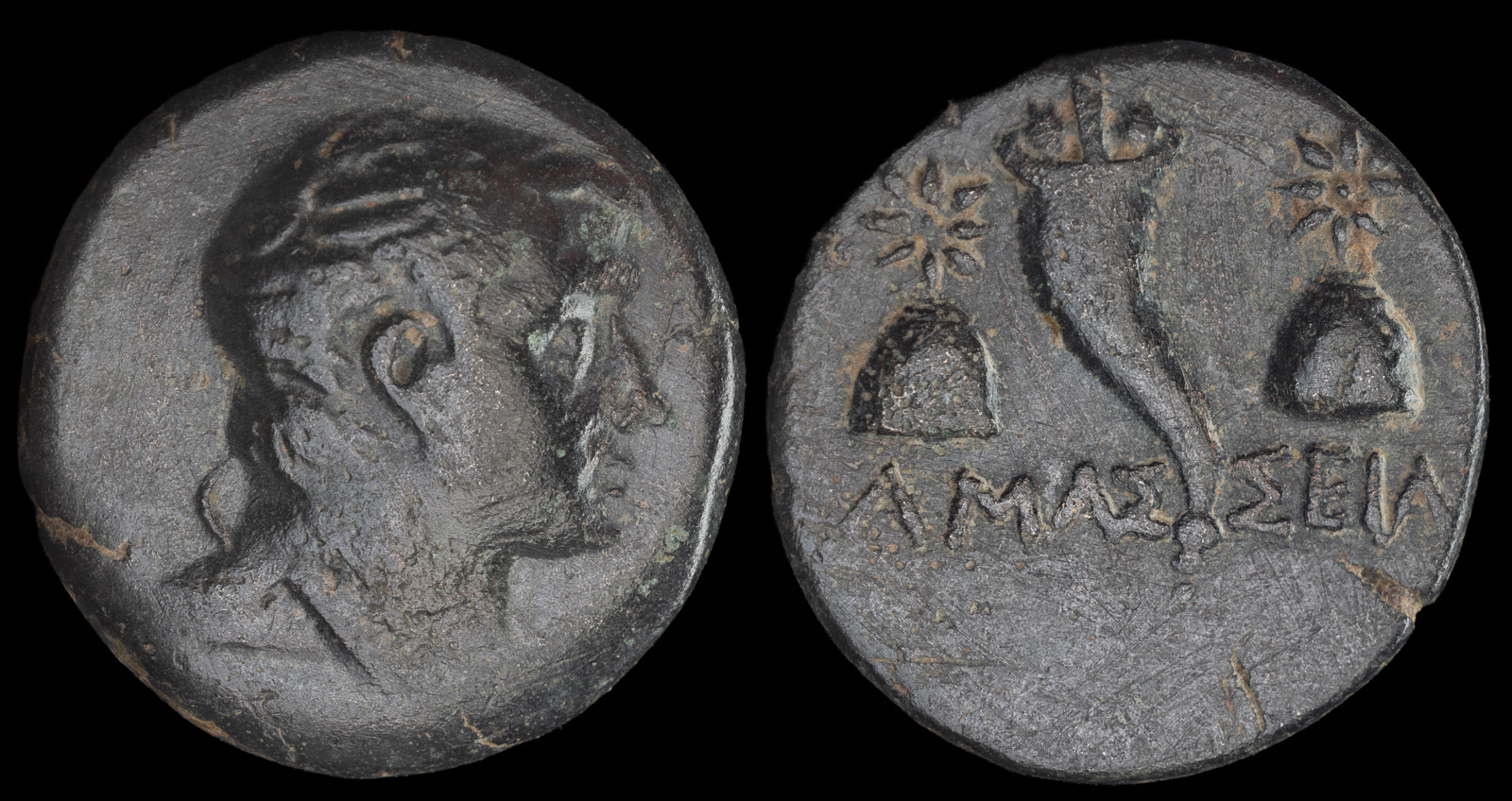
Pontos, Amaseia
Struck under Mithradates VI. Circa 120-100 BCE
AE 17mm 4.00g
Obv: draped and winged bust of Perseus right
Rev: ΑΜΑΣ – ΣΕΙΑ[Σ], cornucopia between pileoi of the Dioskouroi
SNG BM Black Sea 1046-7; HGC 7, 225
Amasya is one of the few ancient cities that retains its name today. Especially in Asia Minor the names were changed.
Although the modern city has taken up most of the ancient, the royal tombs are still visible today. It was an ancient city even by the time of Alexander the Great, and eventually became the capital of the Kingdom of Pontos.
The historian Strabo was born here.
Amaseia and Amisos are incorporated into the Kingdom of Pontus when Mithridates I Ktistes establishes the Pontic Kingdom. Amaseia is chosen as the capital, due to its strategic location in a defensible valley along the Iris River.
Amaseia and Amisos are incorporated into the Kingdom of Pontus when Mithridates I Ktistes establishes the Pontic Kingdom. Amaseia is chosen as the capital, due to its strategic location in a defensible valley along the Iris River.
Mithridates V Euergetes is born in Amaseia. He later becomes a key ruler of Pontus and expands the kingdom’s influence.
Following the defeat of Mithridates VI by Pompey the Great, Amastris, Amisos, and Amaseia are integrated into the Roman province of Bithynia et Pontus.
Julius Caesar visits the region following his victory over Pharnaces II (son of Mithridates VI) at the Battle of Zela (near modern-day Zile, close to Amaseia). He reportedly utters the famous phrase “Veni, vidi, vici” (“I came, I saw, I conquered”) after his swift victory.
The Pontic Kingdom is officially annexed to the Roman Empire. Amaseia is no longer the capital because it is reorganized into the province of Galatia.
Arrian, a Roman governor, visits the Pontic region, including Amaseia, and documents information about Pontus in his work, “Periplus of the Euxine Sea.”